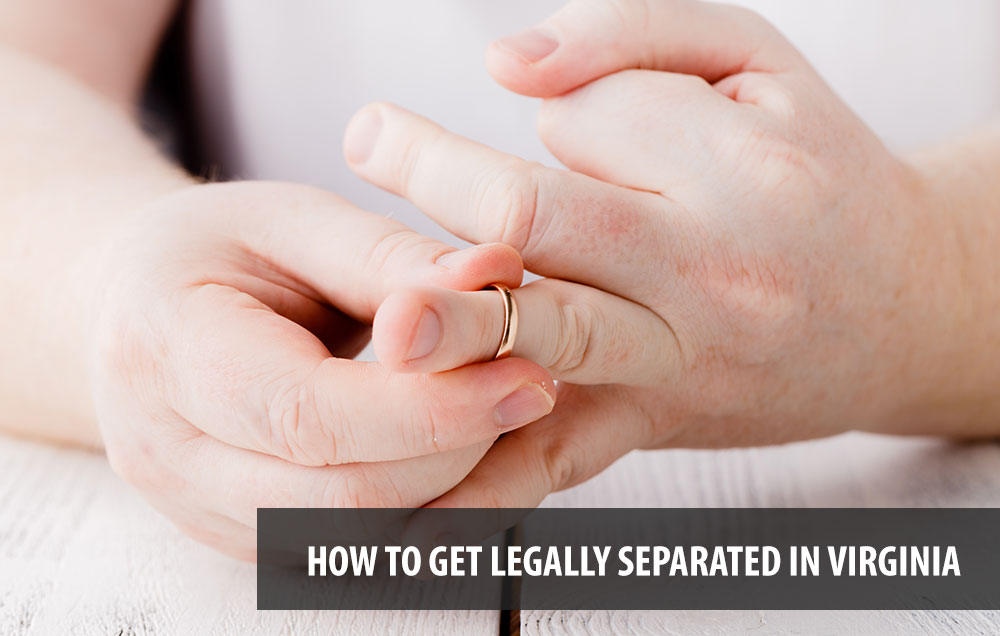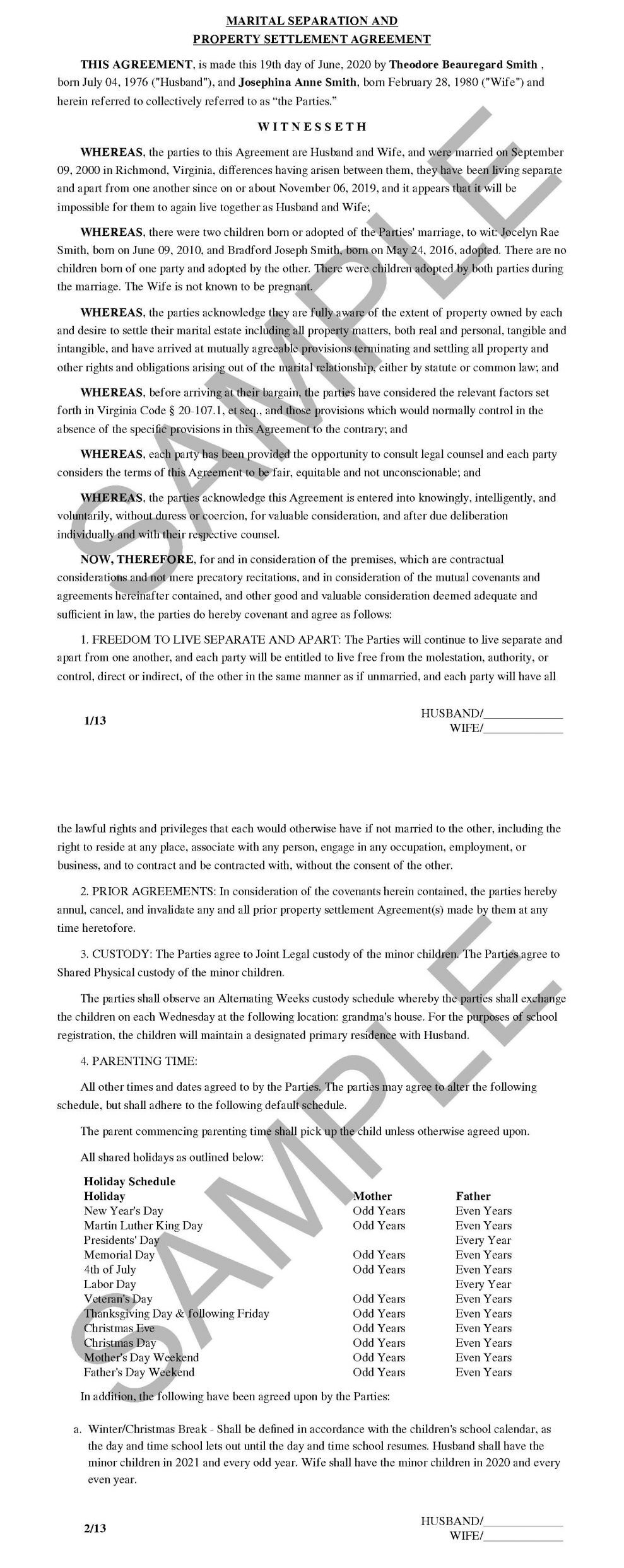Virginia does not offer a formal legal device called “legal separation.” It recognizes legal instruments leading to divorce, such as a Property Settlement Agreement (also known as a Separation Agreement). To get “legally separated” in Virginia, you have two paths:
- You can hire a family law attorney to do the paperwork of a Property Settlement Agreement; or
- You can do all the footwork, round up all the financial papers, cross all your own T’s, dot all your own I’s, and work through all the potential conflicts
Virginia has many codes and regulations about divorce. Legally, the Commonwealth views separation as warm-up to divorce, so separating couples need to establish a chain of intent that shows they want to separate and then later, possibly, divorce:
- Establish a date of separation
- Craft a Property Settlement Agreement, aka Separation Agreement
- Live separate and apart (that has its nuances)
- Develop a custody and parenting plan for the children, if any
Date of Separation
You first need to determine a legally defensible date of separation. This is some form of legal document, public announcement, or contact with a family law attorney.
You can put an advertisement in the newspaper telling one and all that, as of the date of publication, you and your spouse are separated. You can tell your spouse, even if you plan to stick around the ol’ homestead for a few more days, and enter the date in your diary or journal. Visiting a family law attorney is a great move, if you can afford it.
By far the easiest way to establish a date of separation is to rent one of those advertising tow planes to fly over Virginia Beach with a big banner: “William Is Leaving Ava and Taking His Stamp Collection and Ginsu® Steak Knives With Him.” On second thought, that’s too many words. The plane will never leave the ground.
By far the easiest real way to establish a date of separation is to sign a Property Settlement Agreement.
Property Settlement Agreement
A Property Settlement Agreement is loved by all Virginia courts because it does so much of the groundwork for them. It is also called a separation agreement because it lists everything you and your spouse worked out for living separate lives:
- Finances, including equitable division of assets and debts
- Property, including homes, vehicles, second or vacation homes, artwork, tools, personal items, jewelry, furs, and those fabulous Ginsu® steak knives
- Children, including custody, support, and parenting time schedules
- Military aspects, including duty status and retirement accounts
You and your spouse have to think through everything, and every possibility, in the separation agreement. Suppose a child gets sick — who has legal custody to make medical decisions? Suppose one of you gets the very large family home and the other gets the tiny vacation home — who pays real estate taxes on each during the time you are separated?
The separation agreement is your road map, calendar, and crystal ball all in one.
Live Separate Lives
After you establish intent to separate, you must separate. This is a subtle thing, though; you two can still live under the same roof so long as you stop fulfilling the roles of husband and wife:
- No sex
- No gifts
- No cooking, washing or ironing (does anybody still iron?)
- No groceries, dry cleaning, money lending
- No favors, repairs, or assistance of any kind
You are both permitted to appear together at traditional family functions, but separation means being apart in every meaning of the word for a minimum of six months (without children) or a year (with children) before divorce, in most cases.
Children
Children, the little darlings, make separation and divorce a bit harder. But, hey, you love them, so here’s what you have to do:
- When you go to the airport to have your big sign fly at the beach, leave the kids in a hangar with enough quarters for the snack machine so they don’t go hungry.
No? Okay, you and your spouse have to work out three distinct areas involving your children:
- Who gets them? That’s custody, and it has two parts: physical and legal custody
- Who supports them? That’s child support
- Who visits them and when? That’s the parenting time schedule
A parenting time schedule must take into account every hour of every day of every year of their tiny lives. You and your spouse work out who gets Emma and Lucas not only this Thanksgiving, but for nine Thanksgivings in the future. Groundhog Day. Summer vacation. Arbor Day; whatever your family considers important holidays, you have to work out custody and visitation.
Ideally, you could work through all the nooks and crannies of separation by a question and answer format. A family law attorney can do this, but you can also engage in a seemingly casual, confidential, and personally focused electronic interview that actually overlooks nothing. Go to TheFirmForDivorce.com to learn how you can get started.


